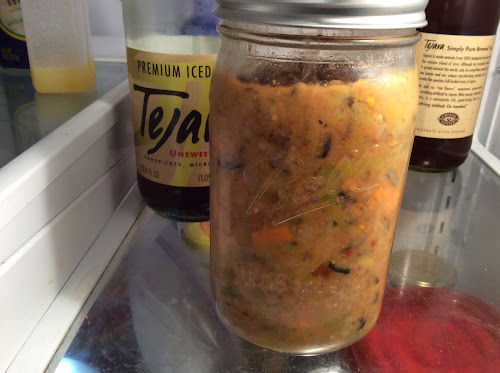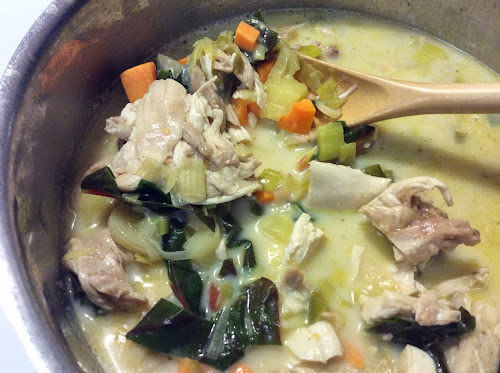You know those annoying too-easy-to-be-true, carefully designed to hit maximum brain craving recipes that pop up in Facebook? The ones that encourage you to "make sure you post this to your wall so that you can reference it later!!!!!!!!!!", as if there is one moron left in this world that hasn't figured out that doing so is actually sharing it with like all your gazillion friends who of course want to see the recipe as well as the million memes about *your* pet issue?
But I digress.
It finally happened. I finally had to put this idiocy to the test. Could I totally be missing out on some of the best kept secrets known to (wo)man of how to make succulent cravables in *my* kitchen? Could it be that instead of a shelf full of carefully vetted cookbooks, a binder full of my mother's recipes, and a handful of tried and proven cooking blogs, what I really needed was merely some pretty pictures and emoticons?
Project 1: It's apples...no it's onion rings....no it's...

Please go ahead and convince me that the product of this recipe isn't meant to evoke the promise of friend onion rings. But then you realize it's APPLES, and CINNAMON and SUGAR.....and well, I was sold.
Not so much when I saw the recipe. That was an awful lot of of ingredients......
Fried pancake covered apple rings. That were tossed in a cinnamon sugar mixture.
I'll leave it up to you to make that "as advertised" with "reality" comparison side by side image.
I ate 2 or 3 and threw the rest of way.
Not impressed. Nothing special. Certainly not worth the effort. Lesson learned. For the next project...it needed to be simpler. Trendier. And for goodness sakes not include a list of ingredients and directions that took several screen shots to capture. Because obviously a real facebook recipe should be both cravable AND simple to make for someone with the attention span of......squirrel!
Project 2: I'm craving cinnamon rolls
This recipe was perfect. I found myself on a Saturday morning with a cinnamon roll craving and....a can of biscuits. A couple days prior I had scrolled through a facebook recipe that explained itself in pictures and seemed simple enough while delivering some sort of monkey bread-cinnamon roll experience that promised to be heaven on earth. It skipped most of the pit falls of the previous recipe, making it clear that anyone with the ability to purchase ingredients and hold it together for 5 or 10 min could in fact make something so unforgettably delicious it would be a Saturday morning staple in my household for all time. As a bonus, it was simple enough I remembered both it AND how to make it DAYS after seeing it.
Getting into the spirit of things, I decided to try my own hand at a little food-blog-picture-taking.

Cut biscuits into pieces. Ignore the dirt on the counters.
Tada!!!!!! Now for the critical part - flipping the monstrosity over. It was made very clear in the recipe, having made it in a bundt pan, that flipping it was critical to quality control.
Voila! I scraped the rest of the cinnamon sugar tasties out of the bottom of the skillet and dribbled on top. This was looking promising!!!!!
Verdict? ummm....well. It was really buttery. Too buttery to be cinnamon roll. Sorta....meh. So much promise...but on delivery fell short. The biscuit dough was just a carrier which is fine, except there was too much of it not to help deliver with taste. The amount of butter was overwhelming and I was suddenly glad I hadn't sacrificed the entirety of my butter inventory to replicate the primordial soup. Maybe a garlic bread version would have been better. Maybe with copious amounts (more) of cinnamon and sugar it would have been outstanding (what isn't improved with more cinnamon and sugar?). But maybe...next time I'll just whip up my mother's biscuit no rise cinnamon rolls and have cinnamon rolls. Or buy the can of cinnamon rolls that is sold right next to the biscuits.
Project 3: The one that really did work
I found this not on facebook, but on a google search, armed with a gallon sized bag of raw almonds and the faint recollection that someone once told me almond milk was easy to make. And they were right.
It's easy, delicious, explains itself in pictures, and doesn't require exact measurements.
Make sure you post this on your timeline so you can easily reference it later!!!!!!! ;)

Soak raw almonds in water, enough to cover the almonds, for 1-2 days. Drain. (remind yourself to wipe down your counters...)

Put in blender with twice as much fresh water. The almonds plump during soaking and I use the dry volume of almonds to determine how much water to add. Shown is 1c. almonds (pre soaking) and adding 2 c. water.

Blend to smithereens.

And then blend some more.


























